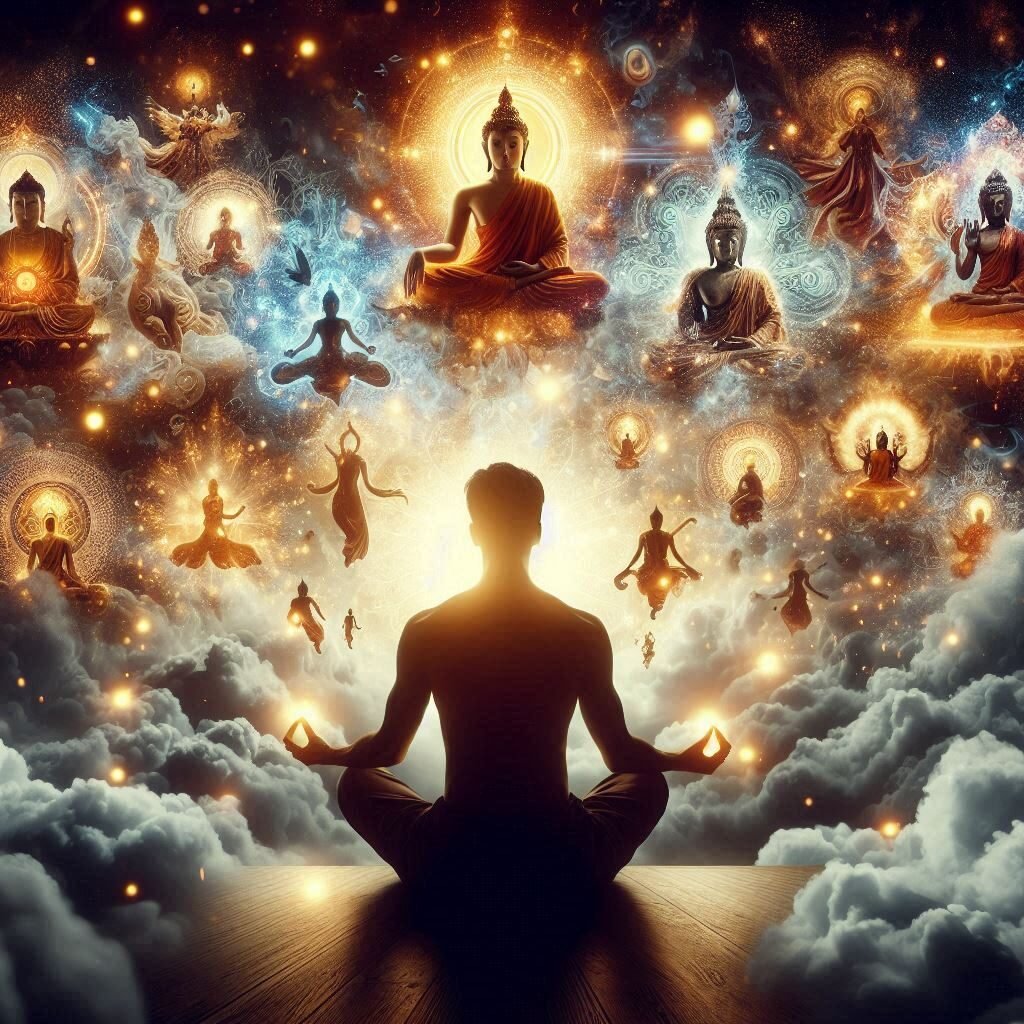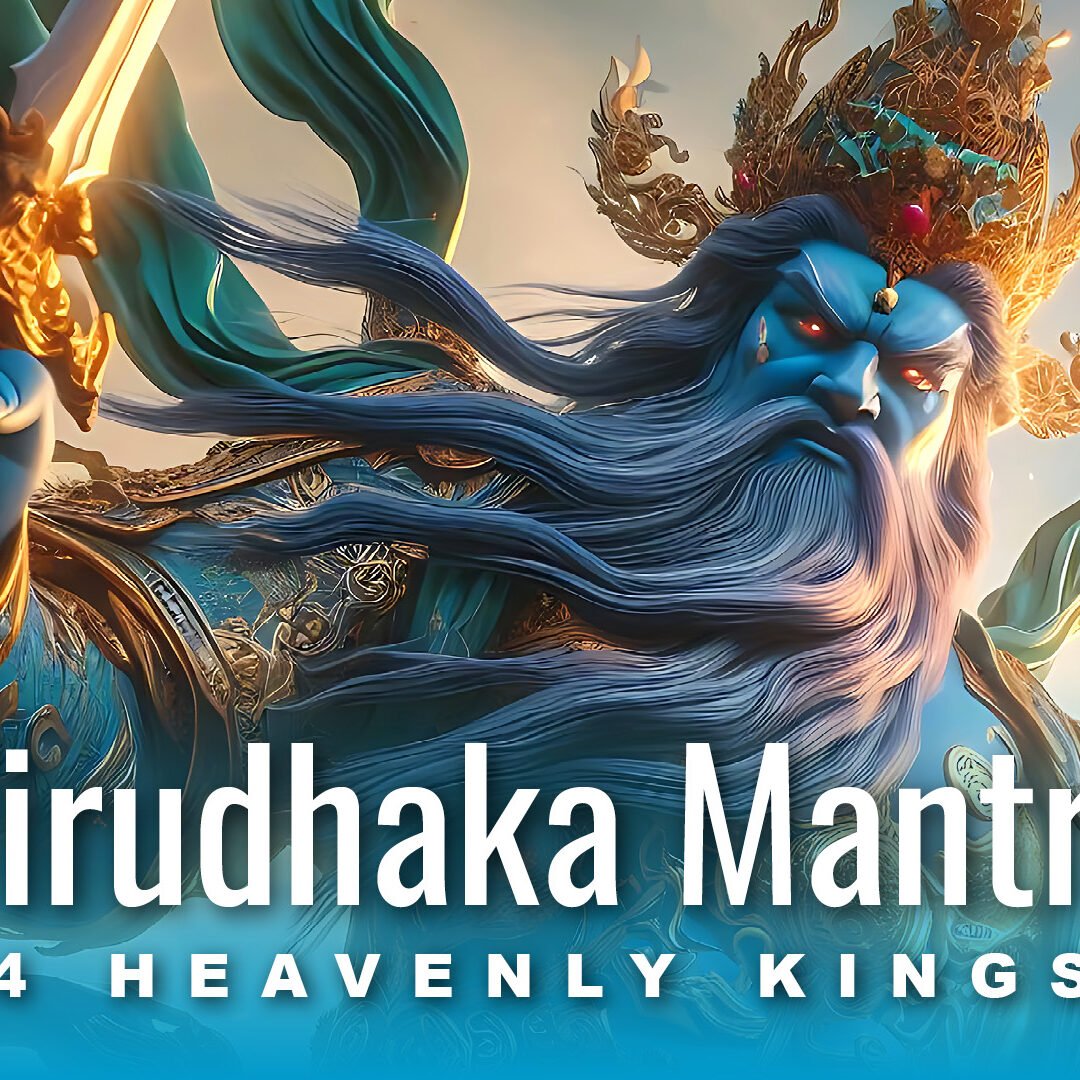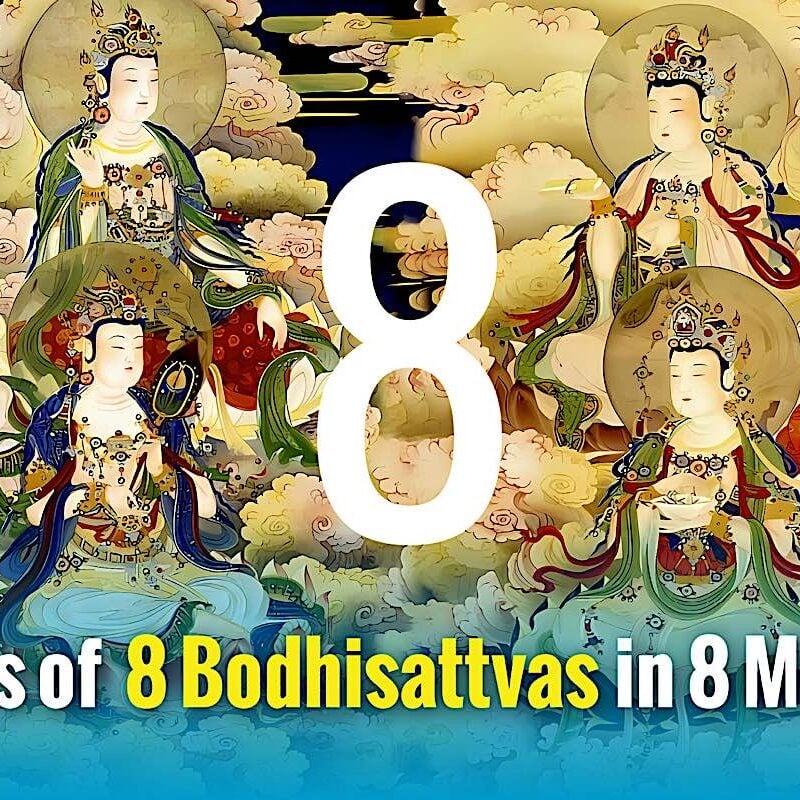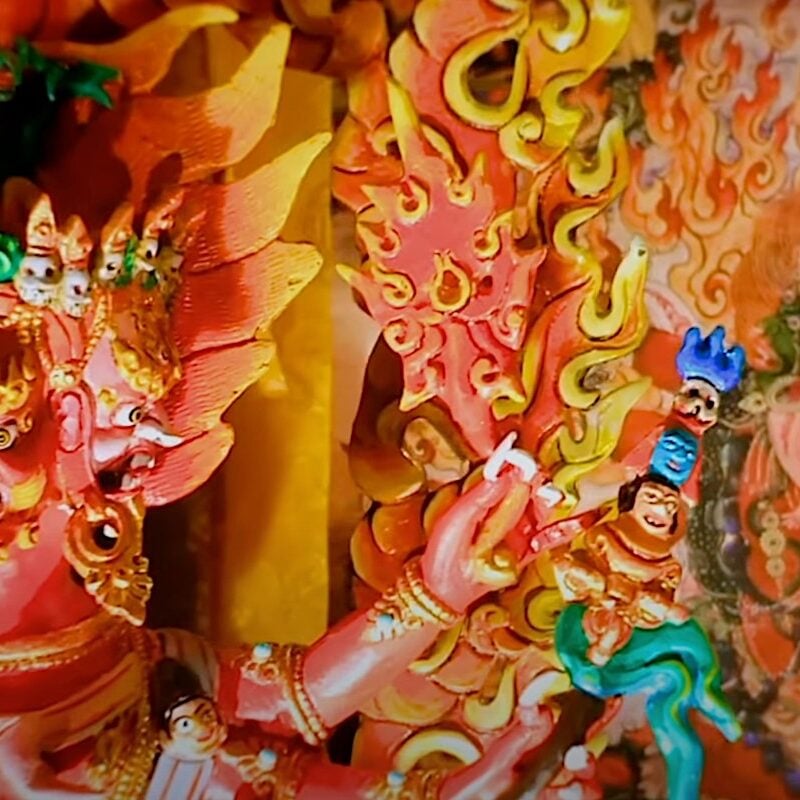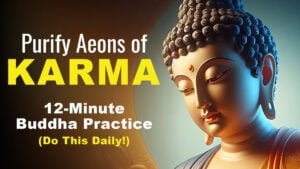Video: 21 Taras Five Activities Dharani Praise in Sanskrit 1 Hour: Pacifying, Enriching, Magnetizing, Wrath
Tara emanates in 21, 108 and 1008 Forms — suited to each individual’s needs, obstacles, problems and dangers. Even within the 21 Taras, there are four big systems of Taras, of which Surya Gupta is the most exotic and active. Tara appears in the five colors —
- White for Pacifying
- Black for Wrathful or Destroying
- Red for Magnetizing and Enchanting
- Yellow for Enriching
- and Green for All Activities.
Within those five colors, she has many forms. Each form addresses a different need or danger or problem. Each has it’s own mantra and each has its own Dharani verse. Traditionally, we chant the 21 Taras Dharani praise daily, especially in the original Sanskrit language, is a powerful, energizing practice. You can feel the vibrations as you listen or chant along.
See Our In-Depth Coverage of the 21 Taras
- 21 Taras in the Surya Gupta lineage>>
- 21 Taras Part 2 of Surya Gupta lineage>>
- 21 Taras Part 3 of Surya Gupta lineage>>
- 21 Taras Nyingma and Atisha lineage>>
More articles by this author
Search
Latest Features
Please support the "Spread the Dharma" mission as one of our heroic Dharma Supporting Members, or with a one-time donation.
Please Help Support the “Spread the Dharma” Mission!

Be a part of the noble mission as a supporting member or a patron, or a volunteer contributor of content.
The power of Dharma to help sentient beings, in part, lies in ensuring access to Buddha’s precious Dharma — the mission of Buddha Weekly. We can’t do it without you!
A non-profit association since 2007, Buddha Weekly published many feature articles, videos, and, podcasts. Please consider supporting the mission to preserve and “Spread the Dharma." Your support as either a patron or a supporting member helps defray the high costs of producing quality Dharma content. Thank you! Learn more here, or become one of our super karma heroes on Patreon.
Lee Kane
Author | Buddha Weekly
Lee Kane is the editor of Buddha Weekly, since 2007. His main focuses as a writer are mindfulness techniques, meditation, Dharma and Sutra commentaries, Buddhist practices, international perspectives and traditions, Vajrayana, Mahayana, Zen. He also covers various events.
Lee also contributes as a writer to various other online magazines and blogs.









